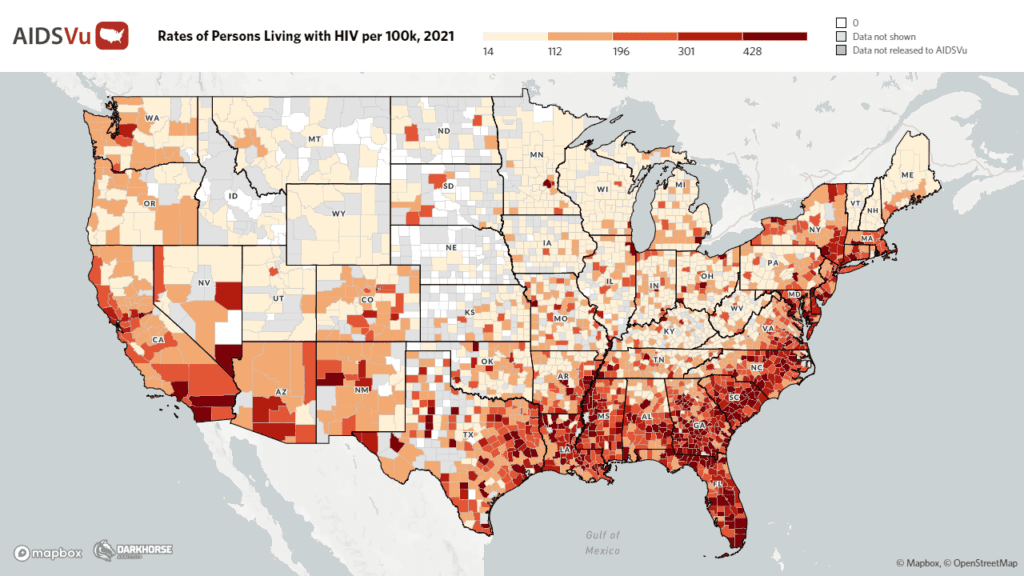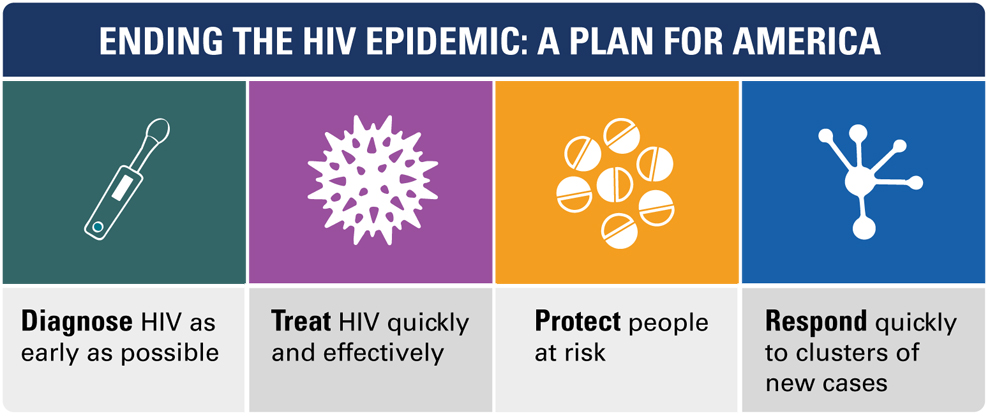
Plans
Planning to eliminate the HIV epidemic.
Ongoing monitoring and improvement
Expertise, technology, & resources
A global partnership targeting 0 new HIV infections
Availability, accessibility, and acceptability
Reporting and control of diseases of public health importance
Comprehensive community health data
Previous plans and initiatives
During the State of the Union Address, the President reported that the HIV epidemic in the United States would be eliminated within 10 years. For the first time ever, we have evidence-based tools in HIV treatment and prevention that are so effective, we can end the epidemic. By focusing on the biomedical, social, and psychological models, we can eliminate new HIV infections, eliminate HIV related deaths, and eliminate HIV related stigma. The HIV Prevention Program and the Ryan White Program are guided by the principles of public health and social equity. They are driven by the mission to promote health and reduce both both impact and incidence of HIV by working in partnership with other agencies and diverse community groups.
Together we can get to zero – Zero New Infections, Zero New Deaths, Zero HIV Related Stigma.
HIV in Nevada
Currently, Nevada ranks 18th in the nation for the number of individuals diagnosed with HIV. In addition, Nevada’s HIV profile is unique in that HIV infections span all age groups. Youth between the age of 13 to 24 account for 16% of new HIV diagnoses and the burden of new diagnoses is highest among those between the age of 25 to 34 (40%).
There are people living with HIV in all 17 counties in Nevada. Clark County has the highest rate of new HIV diagnoses (20.0 per 100,000 population) and the highest rate of people living with HIV and AIDS (460.1 per 100,000 people). Washoe County, the next populous county in Nevada, has the second highest rate of new HIV diagnoses (7.3 per 100,000 people) and rate of persons living with HIV and AIDS (282.6 per 100,000 people).

Males continue to be disproportionately affected by HIV, as the transmission rates are highest among men who have sex with men (MSM). The number of newly diagnosed persons and category of transmission can be found below.
Transmission Category | Person Living with HIV, 2017 | New Diagnoses 2017 |
|---|---|---|
MSM | 7,579 | 311 |
Injection Drug Use (IDU) | 839 | 25 |
MSM & IDU | 744 | 29 |
Heterosexual Contact | 1,365 | 27 |
The Nevada Office of Public Health Informatics and Epidemiology (OPHIE) monitors the HIV/AIDS epidemic and provides further data for prevention and care efforts. Please see the following links if you are interested in more statistics for State of Nevada and the United States:
Plans
Multiple agencies and community groups throughout the state of Nevada, have come together to offer different plans with the goal of reducing the number of new HIV infections. These plans include:
The HIV Prevention and Care Integrated Plan includes strategies for ongoing monitoring and improvement. The HIV Prevention and Care Integrated Plan Internal Workgroup will meet quarterly to review progress on plan implementation. The State of Nevada – Office of HIV and Clark County Social Service has contracted with the Trudy Larson MD Institute (TLI) for Health Impact and Equity at the University of Nevada, Reno (UNR) School of Public Health to oversee the evaluation and monitoring of the plan. TLI will collaborate with the workgroup and planning bodies throughout the evaluation and monitoring process. An evaluation report will be produced annually to document the implementation process and progress toward the plan goals and objectives.


This epidemiologic profile describes the demographic, social determinants, geographic, behavioral, and clinical characteristics of persons with HIV and other persons who could benefit from HIV prevention across Nevada. The data included in this report covers a five-year span from 2018-2022. This report has many intended uses, including: to identify gaps and set priorities for populations who need prevention and care services; provide a basis for determining or projecting future needs; prioritize and allocate funding resources; develop requests for proposals to providers and subcontractors; increase general community awareness of HIV; disseminate data for providers; frame research and evaluation questions; apply for, and receive, funding; and respond to community needs. For the most up-to-date epidemiological data, please visit the HIV Surveillance Dashboard.
Ending the HIV Epidemic (EHE): A Plan for America, acts boldly on this unprecedented opportunity by providing the hardest hit communities with the additional expertise, technology, and resources required to address the HIV epidemic in their communities. Our efforts will focus on four key strategies that together can end the HIV epidemic in the U.S.:
- Diagnose
- Treat
- Protect
- Respond


The Fast-Track Cities initiative is a global partnership between cities and municipalities around the world and four core partners – the International Association of Providers of AIDS Care (IAPAC), the Joint United Nations Programme on HIV/AIDS (UNAIDS), the United Nations Human Settlements Programme (UN-Habitat), and the City of Paris.
Mayors and other city/municipal officials designate their cities as Fast-Track Cities by signing the Paris Declaration on Fast-Track Cities, which outlines a set of commitments to achieve the initiative’s objectives. Initially heavily focused on the 90-90-90 targets, the Paris Declaration was recently updated to establish attainment of the three 90 targets as the starting point on a trajectory towards getting to zero new HIV infections and zero AIDS-related deaths.
Condoms are an effective barrier against Human Immunodeficiency Virus (HIV) and Sexually Transmitted Diseases (STDs). With guidance from the Office of HIV at the Division of Public and Behavioral Health, a community-wide condom assessment can provide information that can enhance the availability, accessibility, and acceptability of condom use.




